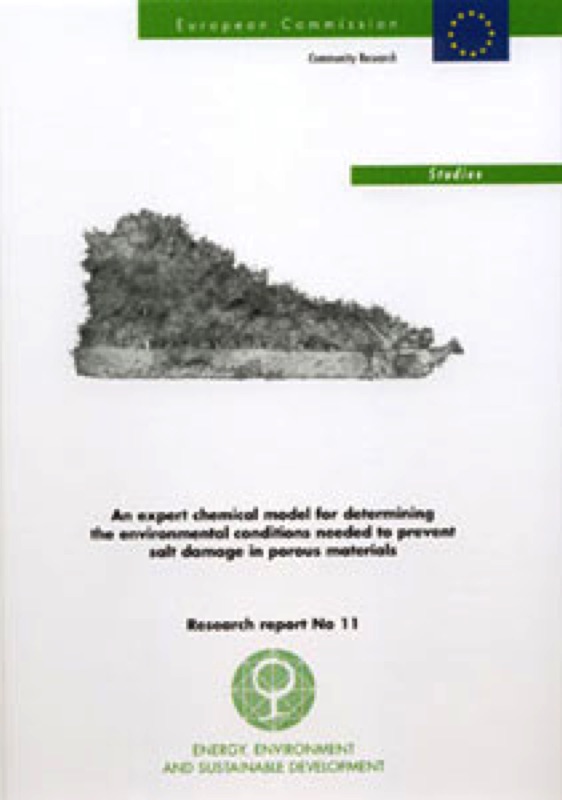This report is the outcome of a European Commission contract to develop a thermodynamic model that could describe the behaviour of aqueous salt solutions in porous materials, such as stone, wall-paintings and ceramics. It covers the development of the model and the problems encountered during the process and the subsequent linking of the successful model developed to an expert (ECOS) system. The system is a major achievement, allowing the user to predict the equilibrium behaviour of salt mixtures in a way which was quite impossible at the outset of the project. It is hoped that the system will be directly applied to the conservation of cultural heritage.
Published 2000
Contents
1 Introduction
2 Salt Damage in Porous Materials
2.1 Introduction
2.2 Mechanisms of salt damage
2.3 Preventing damage through environmental control
2.4 References
3 Pitzer Model of Electrolyte Solutions
3.1 Thermodynamic relations
3.2 Pure aqueous solutions
3.3 Mixed aqueous solutions
3.4 References
4 Data Compilation and Experimental Determinations
4.1 Introduction
4.2 Compilation of thermodynamic data
4.3 Measurements of the water activity in electrolyte solutions
4.4 Solubility measurements
4.5 In situ X-ray diffractometry
4.6 References
4.7 Appendix - References for solubility database
5 A Thermodynamic Model of the Na+-Ca2+-Cl--CH3COO--H20 System
5.1 Introduction
5.2 Model parameterisation
5.3 Model results
5.4 References
6 Total Volumes of Crystalline Solids and Salt Solutions
6.1 Introduction
6.2 Molar volumes of salt minerals
6.3 The Pitzer model equations for the volume properties
6.4 References
7 Data Evaluation and Molality-Based Parameterisation
7.1 Methodology
7.2 Results
7.3 Conclusion
7.4 Binary interaction parameters adopted from literature sources
7.5 Predicted solubility diagrams at 25'C for the ternary systems parameterised in this study
7.6 References
8. Model Parameterisation Based on Mole-Fractions
8.1 Introduction
8.2 Parameterisation of mole-fraction-based model
8.3 Thermodynamic properties of salts and water
8.4 Testing the thermodynamic model and expert system
8.5 Accuracy and reliability
8.6 References
9 The ECOS Program
9.1 Introduction
9.2 Software choice
9.3 Design decisions
9.4 System architecture
10 Using ECOS
10.1 Sampling and Analysis
10.2 Running the ECOS program
10.3 Getting started with ECOS
10.6 Evaluating ECOS
